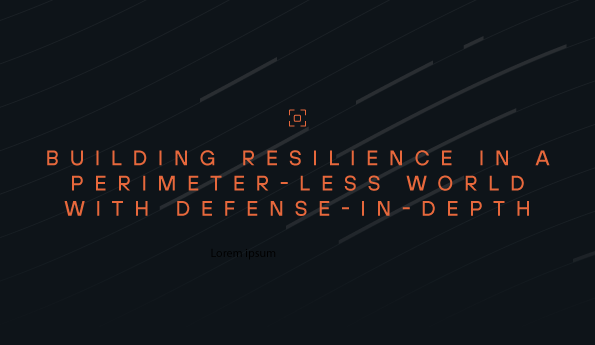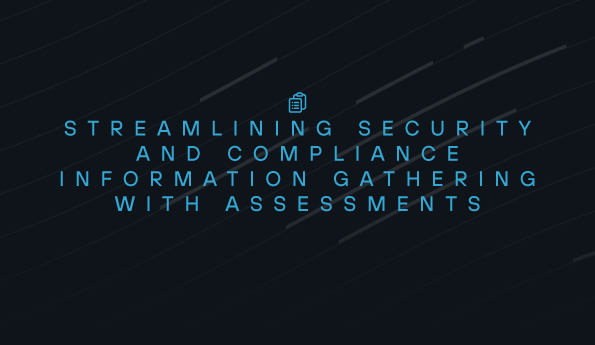Understanding Risk in Cybersecurity: Frameworks, Plans, and Best Practices
Cybersecurity is critical in safeguarding sensitive information from the growing risk of cyber threats. To protect against these threats, it's important to understand risk in cybersecurity and how to implement proactive measures to manage it. In this blog post, we'll explore cybersecurity risk, National Institute of Standards and Technology's (NIST) risk management framework (RMF), the significance of plans in risk management, and essential best practices for mitigating cyber threats.
What is risk and risk management?
To manage cybersecurity risk effectively, it's crucial to grasp its fundamental aspects. Cybersecurity risk refers to the potential harm caused by cyber threats to an organization's information systems, data, and operations. These risks stem from various sources, including malicious actors, system vulnerabilities, and human error. Understanding cyber risks allows organizations to manage them, developing strategies that proactively protect their business.
Risk management is the process of identifying, assessing, and prioritizing risks to minimize or mitigate their potential impact on an organization's objectives. It involves systematically analyzing potential threats, vulnerabilities, and uncertainties that could hinder the achievement of goals or result in negative consequences.
The decisions behind risk management must be upheld from the top of the organization down. Obviously, business leaders need to approve risk classifications and authorize decisions. Furthermore, standard employees must also understand risks and be equipped to aid in preventing them as well.
Here are a few of the actions typically involved in risk management practices:
- Identification: Determining potential risks by considering internal and external factors that may affect the organization's operations, projects, or assets. This involves assessing various areas such as technology, operations, finance, legal compliance, reputation, and more.
- Assessment: Evaluating the identified risks to determine their likelihood of occurrence and potential impact on the organization. This assessment helps prioritize risks based on their severity, enabling more informed resource allocation and risk treatment planning.
- Treatment: Developing strategies and actions to address and mitigate identified risks. This may involve implementing controls, policies, procedures, technologies, and safeguards to reduce the likelihood and/or impact of risks. Risk treatment options include risk avoidance, risk transfer (such as insurance), risk mitigation, or accepting the risk with a contingency plan.
- Monitoring and review: Continuously monitoring and reviewing risks ensures that the implemented risk treatment strategies are still relevant and effective. This involves periodic assessments, performance evaluations, and adjustments to risk management plans as necessary.
- Communication: Effectively communicating risks, their potential impact, and the actions taken to manage them to relevant stakeholders. This helps ensure that decision-makers, employees, and other stakeholders understand the risks involved and can make informed decisions.
By implementing a robust risk management process, organizations can proactively identify, assess, and address potential risks, thereby reducing the likelihood of negative events and improving overall resilience and decision-making. It is a continuous and iterative process that should be integrated into the overall management framework of an organization.
NIST Risk Management Framework
One of the most widely followed risk management frameworks is that by NIST. NIST RMF takes a holistic approach to risk management centered around seven core steps:
- Prepare: Take the steps to ensure the organization can adequately manage security and privacy risks
- Categorize: Analyze the business, both theoretically and based on data, to understand risk impact and likelihood.
- Select: Choose the controls per NIST 800-53 that will protect the system based on the understanding of the entire risk landscape.
- Implement: Set the controls in motion, with documentation to ensure they are repeatable and auditable.
- Assess: Evaluate the controls, ensuring they are in action, effective, and successful.
- Authorize: Obtain leadership approval on risk-based decisions to activate the risk control system.
- Monitor: Continuously review the implementation as well as any new or developing risks.
Abiding by NIST RMF, organizations gain several benefits, namely an expert-developed risk management structure around which to build their program. Doing so promotes better security posture and prevents company and customer data from falling into the hands of attackers. It also helps businesses adhere to guidelines and regulations set out by NIST and other industry/governmental bodies, which are crucial to achieving successful compliance and insurance audits.
Creating a risk management plan
As with most security practices, it is critical to have a plan for risk management that the organization can follow from the top down. Although it will be an iterative process over time, developing a comprehensive cybersecurity plan from square one helps businesses address risks as soon as possible. Consider these steps when planning your risk management approach:
- Risk assessment: To manage risks, you first need to understand them. A risk assessment helps organizations identify the prevailing threats and vulnerabilities that can affect their business. This includes several aspects laid out previously, such as evaluating risk frequency and severity.
- Risk avoidance practices: The best way to prevent risks is to avoid them altogether. Knowing your overall risk levels, find opportunities for the business to evade risks by working around them. That way, you don’t need to invest in any additional resources while still preventing risks.
- Risk mitigation strategies: Some risks are unavoidable. Develop strategies to mitigate your identified risks, prioritizing them based on the level of risk associated. In this step, it’s critical to consider all the technical controls, employee training, incident response plans, and encryption measures you currently have in place. Furthermore, this also gives you insights into which of those you may need to implement to fill gaps.
- Incident response plan: These days, cyberattacks are not a matter of if, but when. Prepare a plan outlining clear steps to be taken during a cybersecurity incident. Understanding the controls you currently have in place, build your incident response plan to be repeatable through thorough documentation. A key part of this is defining roles and establishing communication channels, including containment, investigation, and recovery procedures in your thought process as well.
- Continuous monitoring and improvement: There is no end to risk management, but there are always opportunities to improve. Implement mechanisms for continuous monitoring, including regular audits of your controls and periodic reviews of procedures. This could even mean staging mock incidents to stress test your plan in action. Stay informed about emerging threats and adapt the plan accordingly.
Best practices for cybersecurity risk management
Beyond the frameworks and plans laid out above, there are a few other risk management best practices for buffing out your people, processes, and technology (PPT).
Security awareness training
Everyone in the company needs to be aware of cybersecurity risks and their role in them. Regularly train employees about risks they’ll often face, including phishing attacks, safe browsing habits, and the importance of strong passwords.
Routine software updates and patch management
Keep software, operating systems, and applications up to date with the latest security patches to reduce vulnerabilities. Leveraging out-of-date solutions presents significant risks to a business, both in the potential for attack on unpatched vulnerabilities and the eventual sunsetting of older versions.
Multi-Factor Authentication (MFA)
People are inherently fallible, so even with all the security training in the world, an employee might fall for a phishing attempt or other attack. Enable MFA whenever possible to add an extra layer of security, protecting against unauthorized access even if passwords are compromised.
Data encryption
Physical theft is just as much a threat as digital credential theft. Use OS-specific or third-party disk encryption methods to lock down at-rest and in-transit data on machines. Doing so protects data from unauthorized access especially if a system falls into the wrong hands.
Regular vulnerability assessments and penetration testing
Identify weaknesses and potential entry points for attackers through consistent stress testing of your PPT. Through either internal or third-party services, find out what risks you’ve left exposed and then address those vulnerabilities proactively.
All-in-one security platform
Invest in a solution that provides layers of defense to your IT environment. Incorporating endpoint, network, and application security gives you comprehensive control over many attack vectors and potential sources of risk. And, with a visibility layer on top, you can continuously monitor the environment for threats and anomalous behaviors that can create additional risks and address them.
Learn more
Understanding and managing cybersecurity risk are crucial for protecting data and maintaining operational resilience. With a robust risk management strategy, potential threats can be mitigated, ensuring the security of your organization's digital ecosystem. By adopting frameworks, creating comprehensive plans, and implementing best practices, organizations can confidently navigate the cybersecurity landscape. Continuously evaluate and adapt security measures with a proactive and holistic approach to safeguard digital assets.
See Todyl in Action
Learn how you can protect what you built.
Stay on the Cutting Edge of Security
Subscribe to our newsletter to get our latest insights.



